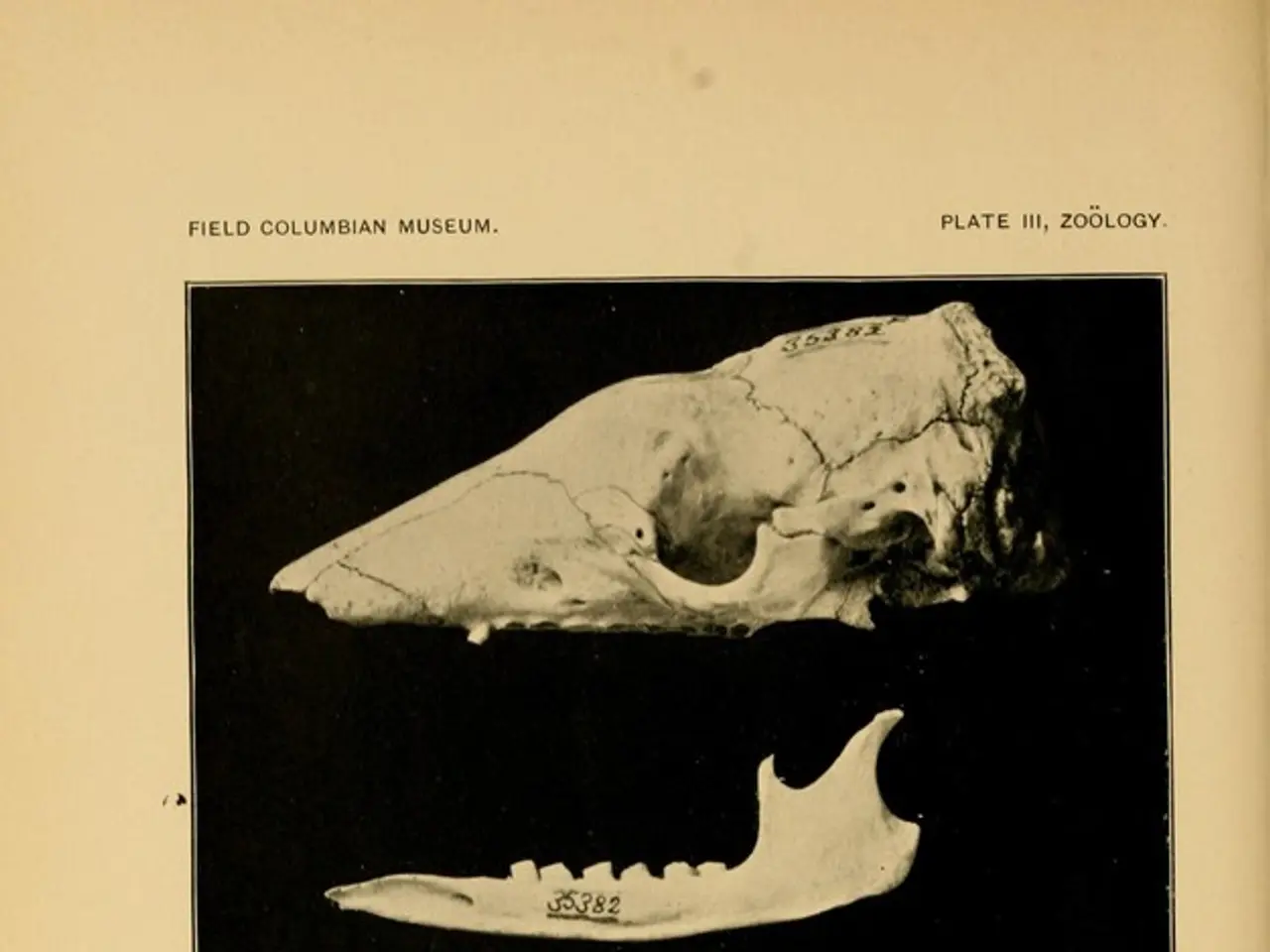Routine Workouts for Addressing Spinal Osteoporosis
Exercises can play a crucial role in managing spinal osteoporosis, a condition that weakens the bones in the spine. Here's a breakdown of some exercises that can help improve bone density and reduce the severity of the condition.
Shoulder Stretch
To perform the shoulder stretch, stand facing a wall, slide your hands slowly and smoothly up the wall, keep looking forward, and hold for 5 seconds. Repeat this twice more. This stretch can help maintain flexibility, which is essential for people with spine osteoporosis. However, always consult a doctor before starting any new exercise routine.
Hamstring and Calf Stretch
These stretches are beneficial for maintaining flexibility in people with spine osteoporosis. The hamstring stretch and calf stretch, in particular, can help support spine health.
Chest Raises
The chest raises exercise involves lying on the stomach, pulling the shoulder blades together, and smoothly lifting the head and chest while continuing to look straight down. Hold for 5 seconds, followed by a 2-second rest, and repeat until tired.
High-Intensity Resistance and Weight-Bearing Activities
Exercises that involve high-intensity resistance and weight-bearing activities targeted to the spine and related areas can help improve and partially reverse bone loss by increasing bone mineral density (BMD). However, it's important to note that "reversal" means improvement in bone density rather than a complete cure or return to normal bone health.
The 2025 LIFTMOR trial showed that postmenopausal women following a supervised high-intensity resistance and impact training program experienced about a 4% improvement in lumbar spine BMD, which is clinically significant for fracture prevention.
General Exercise Recommendations
- Weight-bearing exercises such as walking, hiking, stair-climbing, dancing, and muscle-strengthening activities like lifting weights or using resistance bands improve bone strength and reduce fracture risk.
- Avoid exercises that bend, flex, or twist the spine excessively to reduce fracture risk.
- Start with low-impact activities and gradually increase intensity under medical guidance, especially for those with osteoporosis.
- Exercises focusing on posture, upper back, and core strength can support spinal stability and reduce falls.
Other Recommended Exercises
- Resistance training involves using force to push, pull, or lift against resistance and can be done using hand-held weights, resistance bands, one's own body weight, or resistance machines.
- Spinal extension exercises are recommended for people with spine osteoporosis to help maintain spine health.
- The extensor muscle strengthening exercise involves standing with a straight spine and good posture, placing a bouncy ball between the upper back and the wall, keeping the feet apart and away from the wall, and pivoting from the ankles to press back against the ball.
- Posture and balance exercises, such as tai chi and yoga, involve holding or slowly moving through different poses and can strengthen the muscles that help with balance.
Safety Precautions
- When starting a new exercise program, it's important for a person with osteoporosis to speak with their doctor, and a physical therapist or other exercise professional can provide expert guidance on exercising safely.
- People with osteoporosis should avoid loaded forward-bending of the spine, sudden, forceful movements, forceful twisting motions, and activities that carry a risk of falling.
- If an exercise program starts to make a person feel unwell or causes pain, they should stop immediately and contact their doctor.
Daily Exercise Routine
- The extensor muscle strengthening exercise can be done daily, gradually increasing to 15-20 repetitions. To make the movement more challenging, move the feet farther away from the wall while still keeping the spine straight.
- The neck press against resistance exercise should be done in the morning and evening every day. To progress further, a rolled-up towel or foam roller can be used instead of a pillow.
Calf Stretch
To perform the right calf stretch, stand while holding on to a stable surface, step the right leg backward, bend the left knee forward, ensure both heels are on the floor, and maintain a straight back with a stretch at the back of the right calf. Repeat on the other leg.
In summary, consistent, appropriately designed exercise programs can increase bone density and improve spinal osteoporosis to some extent but must be done carefully to avoid injury. Exercise is best combined with other treatments and lifestyle changes for optimal management.
- Engaging in exercises that strengthen the extensor muscles can support spinal stability for individuals with spinal osteoporosis, enabling them to maintain a straight spine and good posture.
- High-intensity resistance and weight-bearing activities targeted towards the spine and related areas contribute to improving bone mineral density (BMD), with potential to partially reverse bone loss associated with osteoporosis.
- The LIFTMOR trial of 2025 demonstrated that postmenopausal women following a supervised high-intensity resistance and impact training program experienced a notable 4% increase in lumbar spine BMD, which is crucial in fracture prevention.
- Maintaining flexibility through exercises like the shoulder stretch, hamstring and calf stretch, and chest raises can support the overall health of people suffering from spinal osteoporosis.
- A balanced health-and-wellness approach requires not only exercise but also therapeutic interventions for mental health, nutrition, and fitness-and-exercise regimens to offer optimal management of conditions like psoriasis and osteoporosis.
- For individuals diagnosed with osteoporosis, it is advisable to seek guidance from healthcare professionals before starting any new exercise routine to minimize the risk of fractures and manage the condition more effectively through safer practices.




